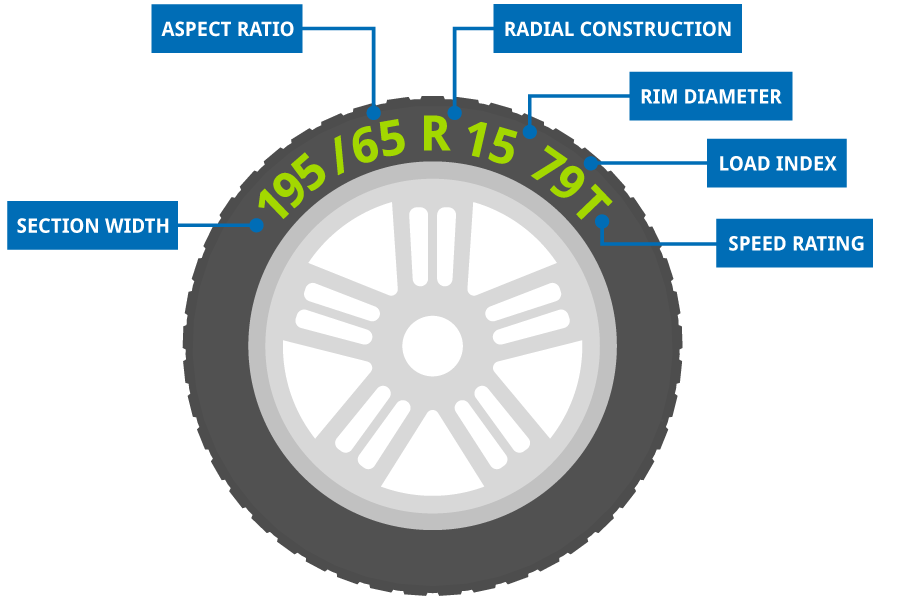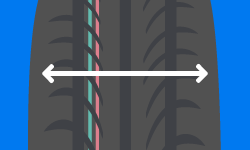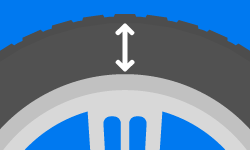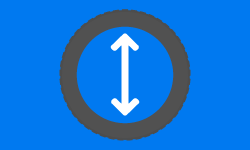TYRE MARKINGS EXPLAINED
Before buying new tyres for your vehicle, it’s essential to know which models you need. The good news is, you can find this information by simply looking at the markings imprinted on the tyre sidewall.
However, tyre markings are made up of a combination of different numbers and symbols, and it can be difficult to know exactly what you’re looking for. To help you understand these codes better, including the tyre size you will need, here are some useful tips.

Tyre Size
Your tyre size is made up of a sequence of numbers and letters as shown in this diagram. In the UK, the most common tyre size is 205/55R16, but there are many different variations. It’s important to check the tyre to ensure you’re purchasing the correct sized model.

Section Width
The first three digits that make up your tyre size relate to the section width. This refers to the width across the tyre and is referenced in millimetres.

Aspect Ratio
The fourth and fifth digits of the tyre code represent the aspect ratio. This refers to the height of the sidewall as a percentage of the section width. For instance, if the section width of the tyre is 196cm and the aspect ratio is 65, the height of the sidewall is 127mm, which is 65% of the section width.
Radial Construction
The next marking that you may see on your tyre is the letter R. Most modern tyres are now manufactured with radial construction, which means that the tyre has been made with the cord piles angled to the direction of travel. As a result, the tyres have extra strength.

Rim Diameter
The next digits represent the tyre’s inner rim diameter in inches. For example, a tyre marked 17 will fit onto a 17-inch wheel rim.
Load Index
The load index rating can be found before the speed rating but after the diameter marking. This rating shows the maximum weight the tyre can bear. It’s important to note that it is not recommended to install tyres with a lower load index than the recommended tyre specification for your vehicle.
Speed Rating
The last letter on the tyre sidewall indicates the maximum speed that tyres can be driven at safely. You can fit tyres with a higher speed rating than your existing tyres. However, fitting tyres with a lower speed rating could invalidate your insurance policy.
Additional Markings
Here are some other markings you might find on the tyre if it has been designed with specific features:
Run Flat
The tyre may also include a code which indicates that it is a run flat model. This technology means that if the tyre loses pressure due to a puncture, you will be able to drive the vehicle for a short distance to a place where it is safe to repair or replace the tyre.
If you’re replacing your tyre and discover it is a run flat model, you may want to replace it with a tyre which offers the same technology.
Runflat symbols vary by tyre manufacturer but include ROF, RFT, EMT, SSR, DSST and ZP.
Reinforced
If the tyre features the letters RF, RFD, REINF, XL or EXL this means the sidewall has been reinforced for the driver’s safety and is designed to handle extra loads.



